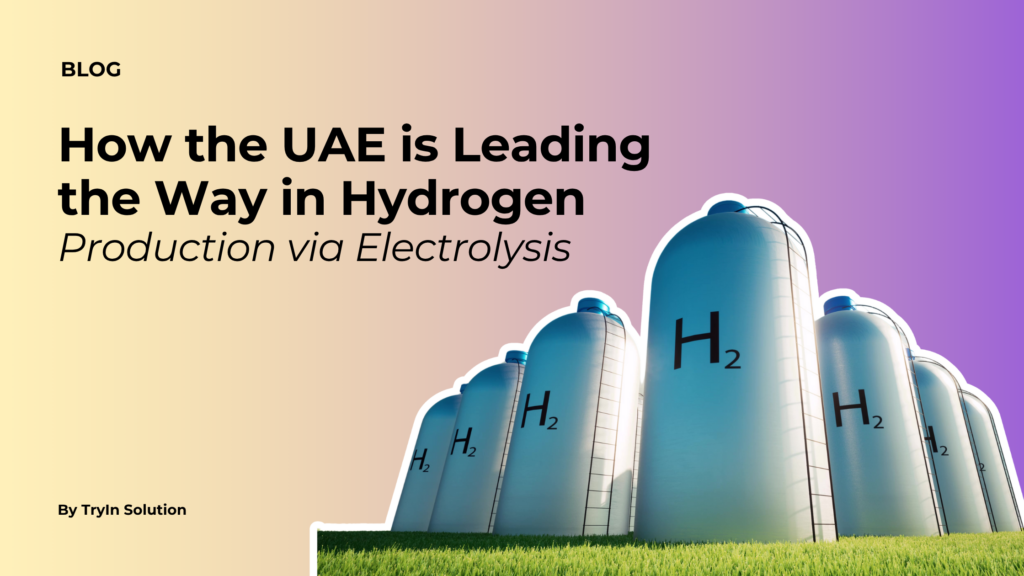
In the global race toward clean energy, the UAE is emerging as a serious player — not just in solar power, but in hydrogen production via electrolysis. With a strong national push for sustainability, supported by innovation-friendly policies and strategic investments, the country is positioning itself as a hub for green hydrogen in the Middle East and beyond.
What Is Hydrogen Production via Electrolysis?
Hydrogen production via electrolysis is a process where water (H₂O) is split into hydrogen (H₂) and oxygen (O₂) using electricity. When powered by renewable sources like solar or wind, this method produces green hydrogen — a clean, carbon-free fuel with vast applications in transport, industry, and energy storage.
Unlike traditional hydrogen production methods that rely on fossil fuels (and emit CO₂), electrolysis offers a future-ready alternative that aligns perfectly with global climate goals.
UAE’s Green Vision: The National Hydrogen Strategy
The UAE has set ambitious sustainability goals under its Net Zero 2050 strategy, and hydrogen production via electrolysis is at the heart of that vision. Key initiatives such as the Masdar Hydrogen Alliance and the Emirates Hydrogen Leadership Roadmap are examples of how the UAE is blending policy, private investment, and R&D to accelerate growth in this sector.
According to recent estimates, the UAE aims to capture 25% of the global low-carbon hydrogen market by 2030 — a bold but achievable target, thanks to its infrastructure and innovation readiness.
Why Electrolysis Is the Preferred Method in the UAE
The country’s abundant solar energy makes it uniquely suited for large-scale, renewable-powered hydrogen production. Electrolyzers can operate efficiently using this clean electricity, making hydrogen production via electrolysis both feasible and scalable in the region.
At TryIn Solution, our engineering experts support organizations in designing and implementing safe, efficient, and standards-compliant hydrogen systems across the UAE. From feasibility studies to process design and third-party inspection, we offer end-to-end engineering consulting services tailored to this growing sector.
Industrial Applications and Economic Impact
Hydrogen produced through electrolysis is expected to play a key role in decarbonizing heavy industries like steel, cement, and chemicals. It’s also gaining traction as a clean fuel for public transport, aviation, and power generation.
By investing early in infrastructure and talent, the UAE is not only advancing clean energy but also creating new economic opportunities. This includes jobs in hydrogen manufacturing, technology development, and third-party inspection services for ensuring system safety and regulatory compliance.
Conclusion
With world-class infrastructure, strong leadership, and vast renewable energy resources, the UAE is clearly leading the way in hydrogen production via electrolysis. The future of green hydrogen is being shaped today — and the UAE is one of its most important architects. If you’re planning a hydrogen-related project in the region, connect with TryIn Solution to learn how our expertise can help bring your clean energy goals to life — safely, efficiently, and cost-effectively.